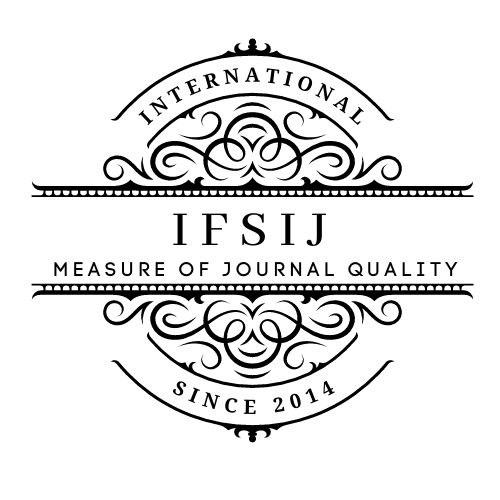THE IMPACT OF CLIMATE CHANGE ON AIR POLLUTION IN BAGHDAD AND ITS HEALTH IMPLICATIONS
Abstract
There are many environmental problems in the city of Baghdad, starting with pollution of air, water, noise, food, public services, water and sanitation facilities, rain drainage, hygiene, waste disposal, and congestion in transportation and communications. In view of the magnitude of these requirements and their insufficiency for the city’s population, whose requirements have increased with the increase in their size, the city has been taking rapid measures to meet them. This has led to severe pressure on the components of the natural environment and its central structures, which are no longer able to meet the population’s requirements properly, which weakens their resistance to any new variable, especially climate change. The city of Baghdad is located within the warm section of the tropical region and its climate is desert characterized by continental (interior regions of the continent). Temperatures in the city of Baghdad exceed 30°C in seven months of the year and reach over forty degrees Celsius in the months of July and August. The average annual maximum temperature in the city of Baghdad was 30.3°C. In addition, rainfall varied between the regions of Iraq, especially the city of Baghdad, which falls within the average annual rainfall of 150 mm, which is a small amount, in addition to its fluctuation from year to year. Therefore, relying on it to meet urban needs is not guaranteed. The city of Baghdad ranks third among the world's most polluted capitals and exports of air pollutants, which portends a very sharp decline in the air quality index, which indicates exceeding the barrier of 150 micrograms/cubic meter for volatile materials PM2.5, and on the Arab Countries level, Iraq occupies the lead in terms of the most polluted Arab Countries, with a rate of 80.1 micrograms per cubic meter, which is 16 times higher, according to the World Health Organization’s guide. The field study showed the reality of the impact of a group of gases and polluting materials on the health of the residents of the city of Baghdad in three monitoring stations, as the highest monthly rate of sulfur dioxide gas (So2) at the Al-Saydiya station in the city of Baghdad for the month of September and in the year 2019 reached (0.046 g/m3), and at a similar rate in the months of August and October, amounting to (0.043, 0.042) g/m3), and its highest value was in the month of November at Al-Andalus Square station in the center of Baghdad, amounting to (0.062) g/m3. As for Al-Waziriya station, its highest rate was recorded in the month of October, which reached (0.067) g/m3, and its annual rate reached (0.038) g/m3. The use of energy sources responsible for greenhouse gases has increased in the city of Baghdad, as the general average of total suspended particulates in the city’s air reached 633 micrograms per cubic meter in 2016, while the average was about 210 micrograms per cubic meter in 2000, and the highest concentrations recorded during the past periods reached a maximum in 2016, amounting to 8800 micrograms/m3. All of this was reflected in the general health of the population in terms of an increase in the incidence of diseases, as increasing temperatures above their normal limit through the air containing gaseous pollutants that raise temperatures, such as carbon monoxide and dioxide, nitrogen oxide, sulfur compounds, and hydrocarbons, produces some parasitic diseases that cause skin diseases, such as allergies and skin rashes, in addition to the increase in the growth of harmful insects and their increasing numbers, as well as laziness and lethargy that affect the behavior and the actions of the population, and this in turn increases the susceptibility to the development of psychological diseases and nervous breakdowns, and it has become clear in terms of the spread of diseases affecting children that chicken pox has spread in most of the municipalities of the city of Baghdad. At the municipal level, it appeared that the municipalities of Al-Rusafa, Baghdad Al-Jedida, Al-Ghadeer, Al-Adhamiya, and Al-Sadir City I and II are more affected by various diseases compared to other municipalities, and the reason for this is the high population and housing density in them.
Downloads
Published
Issue
Section
License

This work is licensed under a Creative Commons Attribution-NonCommercial-NoDerivatives 4.0 International License.















